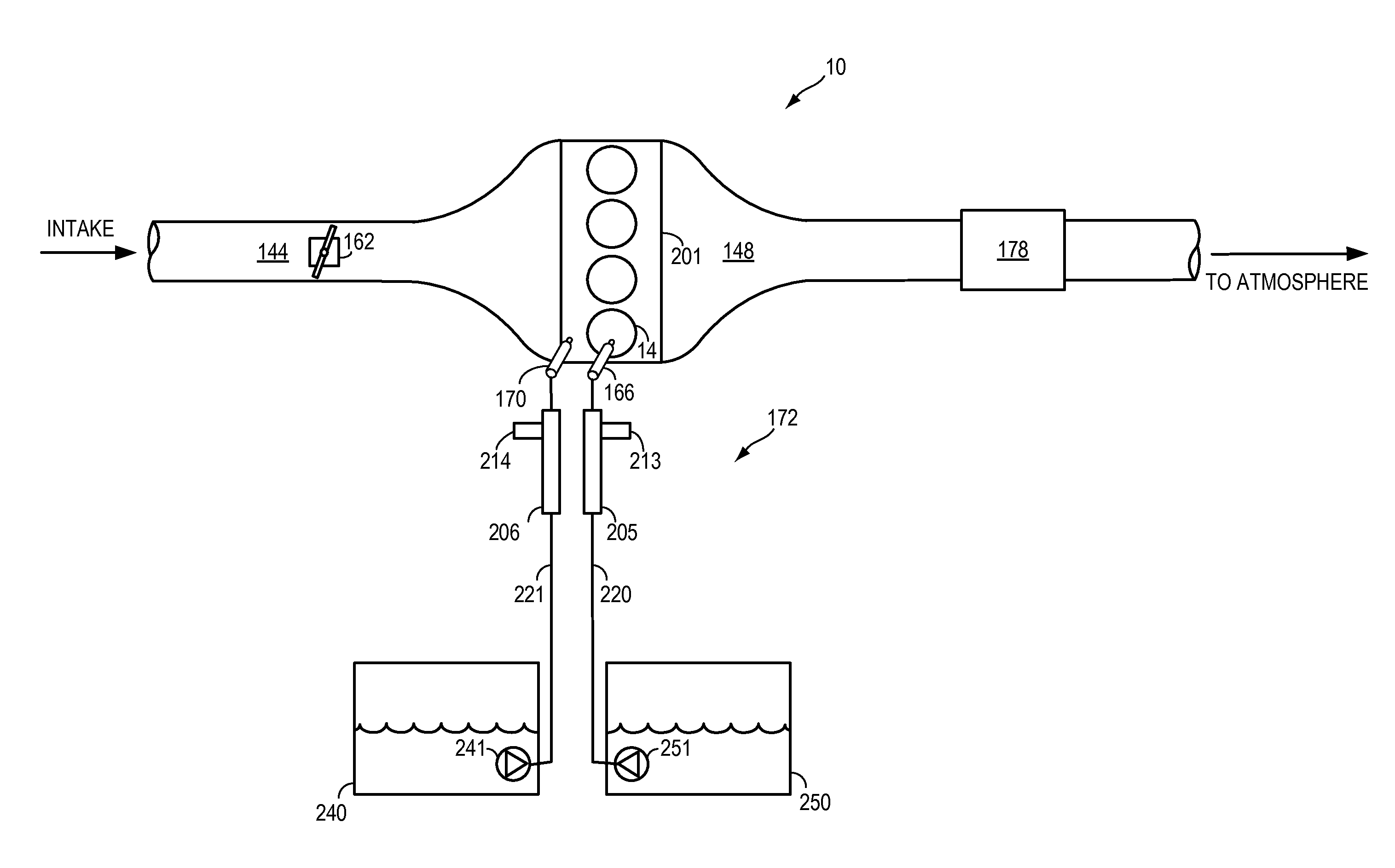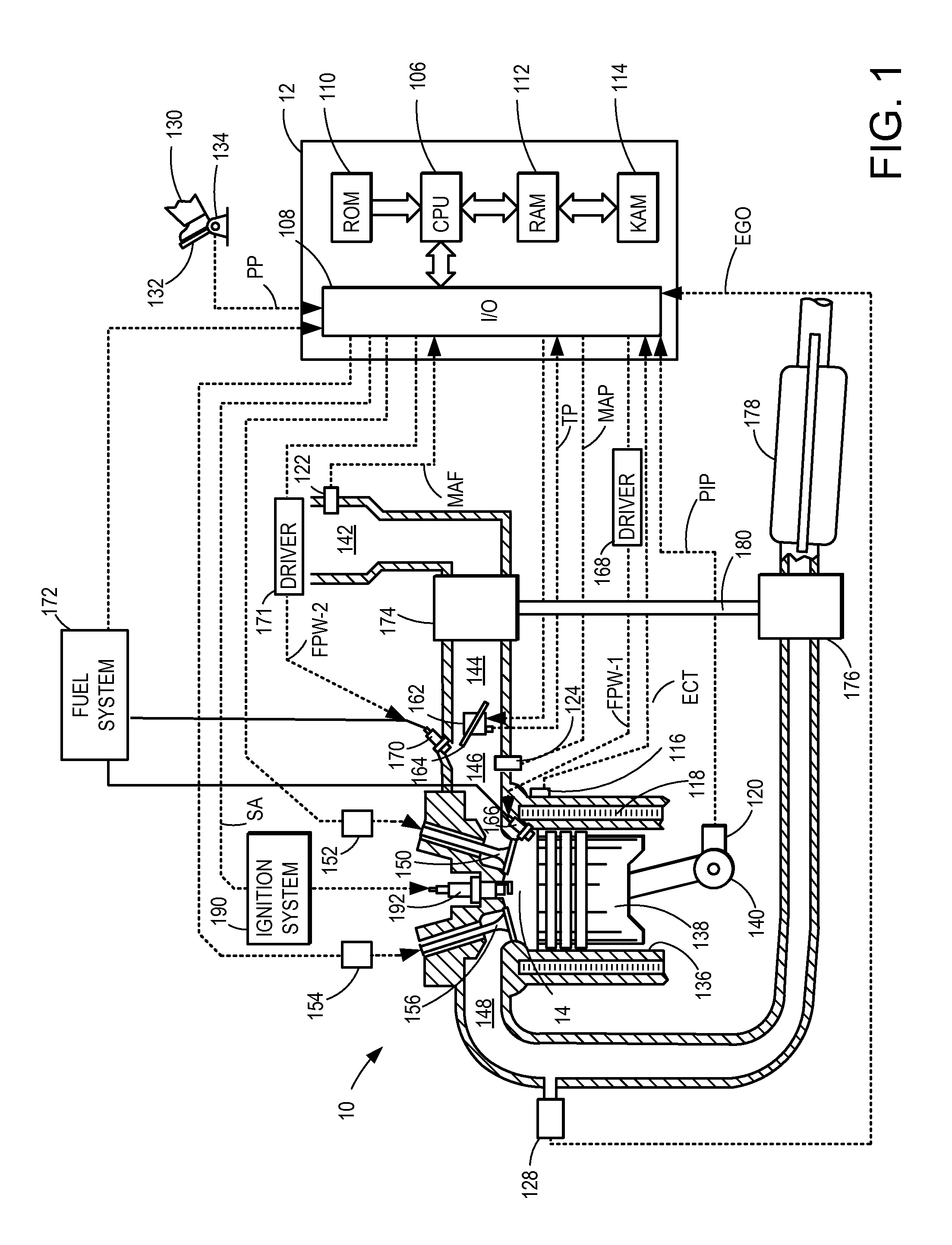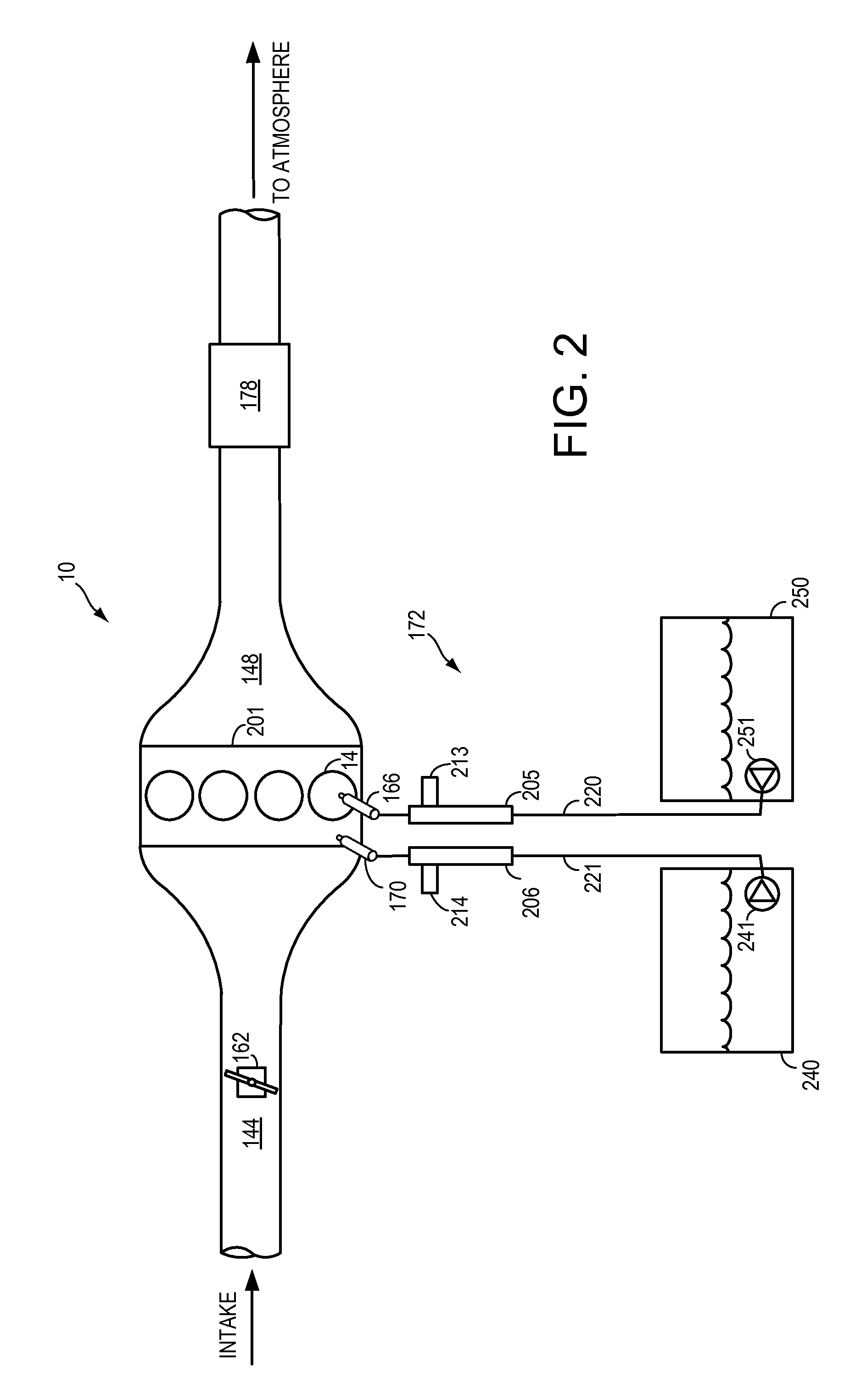Method for operating a direct fuel injection system
a fuel injection system and direct technology, applied in the direction of machines/engines, electric control, instruments, etc., can solve the problems of affecting the durability of the direct fuel injector, affecting the vaporization of fuel within the direct injector, depletion and not being available, etc., to reduce engine emissions, reduce pumping losses & fuel consumption, and improve fuel vaporization
- Summary
- Abstract
- Description
- Claims
- Application Information
AI Technical Summary
Benefits of technology
Problems solved by technology
Method used
Image
Examples
Embodiment Construction
[0014]The present description relates to systems and methods for operating a direct fuel injection system within an engine system where more than one fuel injectors are coupled to an engine cylinder. In one non-limiting example, the engine may be configured as illustrated in FIG. 1. Further, additional components of a fuel injection system as depicted in FIG. 2 may be included in the engine depicted in FIG. 1. A method for operating a direct fuel injection may be provided by the systems illustrated in FIGS. 1 and 2 and the method illustrated in FIG. 3, which shows an example method for operating a direct fuel injector. An additional method for operating a direct fuel injection system is illustrated in FIG. 4. An example timeline for operating a direct fuel injection system in accordance with the above method and systems is depicted in FIG. 5.
[0015]FIG. 1 depicts an example embodiment of a combustion chamber or cylinder of internal combustion engine 10. Engine 10 may be controlled at...
PUM
 Login to View More
Login to View More Abstract
Description
Claims
Application Information
 Login to View More
Login to View More - R&D
- Intellectual Property
- Life Sciences
- Materials
- Tech Scout
- Unparalleled Data Quality
- Higher Quality Content
- 60% Fewer Hallucinations
Browse by: Latest US Patents, China's latest patents, Technical Efficacy Thesaurus, Application Domain, Technology Topic, Popular Technical Reports.
© 2025 PatSnap. All rights reserved.Legal|Privacy policy|Modern Slavery Act Transparency Statement|Sitemap|About US| Contact US: help@patsnap.com



